 By Ray Rivers By Ray Rivers
March 10th, 2017
BURLINGTON,ON
What did you do to celebrate International Woman’s Day? I attended a media roundtable with Ontario’s first female Premier at her office in Queen’s Park. Always professional and direct, Kathleen Wynne should have been facing a potentially tough media presser, the trendy term for press conference. But she got off lightly considering the topic, electricity pricing, has been largely responsible for her party’s position at the bottom of the opinion polls.
The sorry history of the electricity file most recently begins with that common sense guy, Mike Harris, who did to Ontario’s electoral sector what GW Bush had done to Iraq. In his ideological zeal to replace everything government, he broke up Ontario Hydro then banned Ontario Power Generation (OPG), one of the largest and most experienced power companies in North America, from developing alternate energy supplies.
 The look pretty well sums it up. His mismanagement spiked hydro rates and led to black and brown outs, even in that brief period of these changes before the Liberals ousted him. But then Dalton McGuinty had also drunk the Kool Aid, and in his passion to keep the lights on while he phased-out the coal power plants, continued writing lucrative 20 year private sector energy contracts like the proverbial drunken sailor. The contracts mostly guaranteed prices and quantities of power delivered, regardless of whether the energy was needed.
It made some sense from the point of view of the small energy supplier who needed market assurances in order to invest. But in the process Ontario not only bought over-capacity, but over-production, which periodically has to be sold at bargain basement rates to utilities south of the border – or spilled.
 Niagara Falls – the source of a lot of the energy that powers western Ontario. It once made the province a leader in hydro generation.
McGuinty and Harris and their cheering section of academics and industry special interests were wrong when they claimed electricity in Ontario shouldn’t be a natural monopoly. It is no secret that those public hydro monopolies in B.C., Manitoba and Quebec have the lowest utility rates in the country. Of course those provinces have vast stores of water power and Ontario did waste a ton of money experimenting with the nukes. But where has all this new alternative private power development landed us? When prompted, the Premier confessed that her staff had considered re-inventing the old Hydro One, but they believe the time for that option is long passed.
We are now stuck with our mixed private-publicly owned system and the consumers are stuck with the big bills we’ve seen of late. So instead of forcing energy users to pay those bills as we go, Ontario’s new ‘Hydro Plan’ involves buying a 30 year mortgage at today’s low interest rates. That way those billions of dollars committed to private sector contracts will spread out over a longer term, and even with the new financing costs, the average utility bill will fall by about a quarter. Of course that presumes that interest rates don’t start to rise.
 Will the arms be as open in June of 2018 – which is when we get to cast a ballot. The government will peg rate increases to inflation for the next few years, while doing something to bring down the outrageous cost of delivery and using more tax-based subsidy to assist households with lower incomes, and small business. Electricity is no stranger to subsidy and debt. We should recall the massive debt the old Ontario Hydro had run up prior to Harris’ version of shock and awe. Almost 30 billion in liabilities exceeded the assets of both Hydro One and OPG.
Wynne may call this a structural change, sharing the financial burden imposed by these contracts with the next generation. But it is really just about moving money around, taking out a mortgage to help cover sunk costs instead of paying as we go. And it’s not like there are any other options to lower the prices, short of tearing up the contracts, something the courts would never allow.
So the Premier got off pretty lightly with the media at the presser. Perhaps they all understand that she is short on options to deal with something that should have been dealt with a decade or two earlier. Or maybe they are just tired of this topic that has been played too frequently by a media looking for human interest stories, and opposition parties looking to raise their own profile.
 The Premier explaining … We should all hope that the mistakes of the past will not be repeated and that somebody in the energy ministry is working on a real plan, but that was not revealed in the Premier’s presser. Perhaps that is something she is keeping under wraps until the party’s election platform is unveiled next year? But for now it looks like this is as good as it gets.
 Ray Rivers writes weekly on both federal and provincial politics, applying his more than 25 years as a federal bureaucrat to his thinking. Rivers was a candidate for provincial office in Burlington in 1995. He was the founder of the Burlington citizen committee on sustainability at a time when climate warming was a hotly debated subject. Tweet @rayzrivers Ray Rivers writes weekly on both federal and provincial politics, applying his more than 25 years as a federal bureaucrat to his thinking. Rivers was a candidate for provincial office in Burlington in 1995. He was the founder of the Burlington citizen committee on sustainability at a time when climate warming was a hotly debated subject. Tweet @rayzrivers
Background Links:
Premier’s Statement – Wynne’s Popularity – Hydro plan – More Hydro Plan –
Voter Anger – Business Perspective –

 By Pepper Parr By Pepper Parr
March 7th, 2017
BURLINGTON, ON
 Rivers looks at print media from time to time – he prefers the electronic format for the immediacy it gives him and the ability to link what he writes to solid background material, Our ace columnist Ray Rivers has become a member of the Canadian Association of Journalists, sometimes called the Centre for Investigative Journalism and plans on attending one of Premier Wynn’s media Roundtables being held for regional media to discuss Ontario’s Fair Hydro Plan and how it benefits communities across the province on Wednesday, March 8, 2017.
River cover politics for the Gazette – he’s been doing that for five years now.
Members of the media able to attend in person are asked to arrive at the Premier’s Office at 4:45 p.m. Those unable to attend are invited to call in.
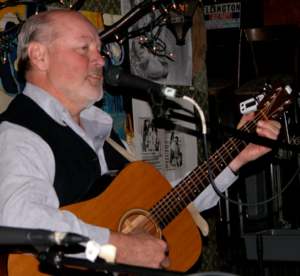 In his spare time Rivers like to play the guitar and enjoy the Goodness of Guinness. Rivers will be on deck Wednesday afternoon when he and a herd of other media will meet with the Premier as she explains what she plans to do to get her government past the post on the June 2018 provincial election

 By Pepper Parr By Pepper Parr
March 3, 2017
BURLINGTON, ON
Here we go again.
It is hard to believe how obtuse some of the people at City Hall can be.
A seven paragraph media release with the word pilot project slipped in but not one use of the work bike or the words road diet.
Here is what the city sent out.
“Water main work with Halton Region will begin on New Street between Dynes Road and Cumberland Avenue on March 7, resulting in lane closures and scheduled water service shutdowns. The construction is scheduled to be completed in May.
“The installation of a new water main between Guelph Line and Dynes Road began in October and November 2016. The work to install the rest of the water main between Dynes Road and Cumberland Avenue will start earlier than scheduled due to mild weather.
“Residents and businesses will be given 48 hours’ notice for scheduled water service shutdowns. Water main installation will include the replacement of curbs, gutters and the boulevard to restore any damage from the water main works.
“New Street between Walkers Line and Guelph Line is the site of a pilot project that began in August 2016 for all street users.
“Completing the water main installation in May will reduce the disruption to New Street into two shorter, two-month intervals rather than one six-month construction period originally planned for the spring and summer of 2017. This will allow for longer, uninterrupted traffic data collection.
“The city is collecting data, and will continue to collect data after the water main work is done and until the end of the summer to ensure the city has the data needed to assess the pilot. That information, along with travel times on nearby residential roads that run parallel to New Street, will be included in a recommendation report to Burlington City Council this fall.
“Creating more travel options for the community means thinking differently about how our city road network looks and functions. The one-year pilot on New Street is an example of how some existing roads in Burlington could be redesigned to give people more travel options to get around the city.”
One of the most contentious projects the city has decided to do – lessen the amount of road space for vehicular traffic on New Street and put in bicycle lanes. It was set up as a pilot project and public opinion views were all over the map.
It was so contentious that the Mayor couldn’t get some personal private time at the Y – residents kept approaching him to bend his ear.
In future they should take him by the ear out to the woodshed.
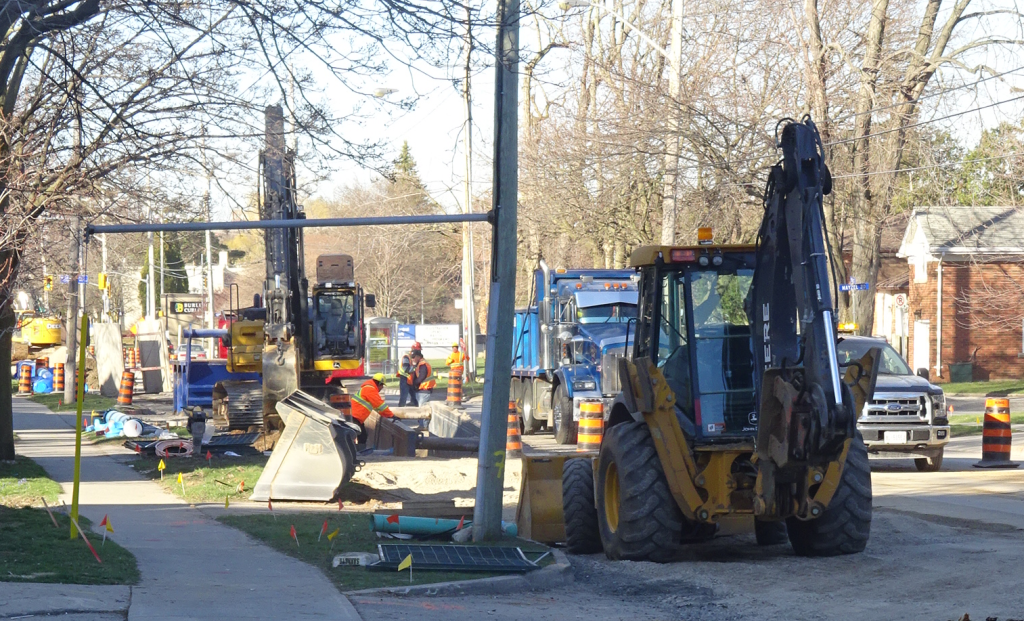 New water mains being laid down on New Street west of Guelph Line. One of the reasons for doing the pilot project on dedicated bicycle lanes was because New Street was going to have significant water main work done and then a new layer of asphalt laid down – it was thought that would be a convenient time to install bicycle lanes and see how they worked.
To not even use the words “road diet” or bike or bicycle is sneaky and only adds to the cynicism over the way city hall works. Do they think that by not using the words that people will forget?
Transparent – accountable – please!
 Vito Tolone, Director of Transportation They transportation department should be ashamed of themselves for letting this kind of media release get sent out. The close to 3000 people at have signed a petition have every reason to be angry – city hall has been exceedingly disrespectful
Vito Tolone, Director of Transportation is quoted as saying” “A lengthy and uninterrupted time-frame to collect all the data needed for the New Street pilot will be beneficial to staff when incorporating this information into our report to City Council.” He can’t say the words either.

 By Pepper Parr By Pepper Parr
January 23rd, 2017
BURLINGTON, ON
The New Street road diet is one of those stories that just does not want to go away.
Each day we see new information dribble in while two woman continue to collect names for their on-line petition that now has 2141 names plus 500 signatures on a paper based petition.
The petition is at: bit.ly/newstreetroaddiet
Ruth Langdon, one of the two retired teachers behind the online petition, said one of her concerns is that this road diet will be continued onto Burloak Drive.
 The idea was to share the road – motorists were taught to respect the signals painted on the road. “The plan seems to already be completed for bike lanes on New Street from Guelph Line to Burloak Drive.” She adds that she believes “the city has started working on a road diet for Maple Avenue from Lakeshore Road to just south of Mapleview Mall – pilot project for next spring.
“And that they have started working on a road diet for Lakeshore Road from water treatment plant to Eastport Drive. Are these really pilot projects or done deals?
One of the problems is the city hasn’t provided the level of information people need.
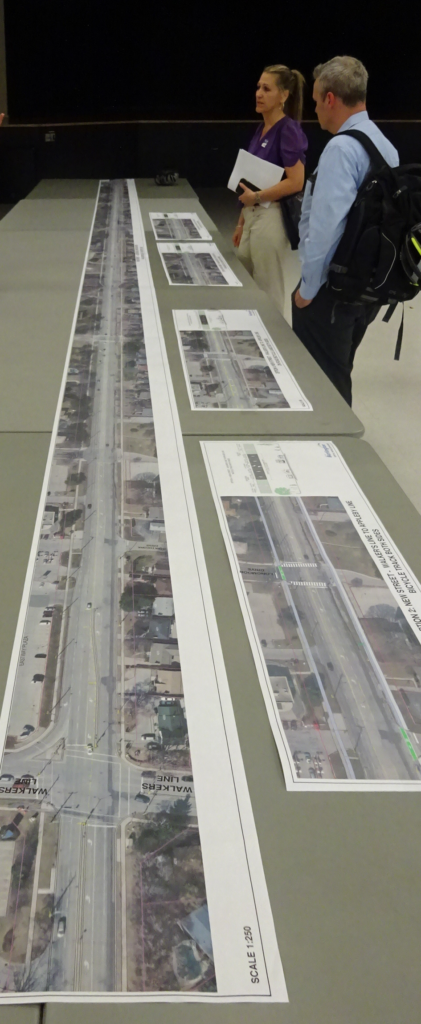 The city did hold an information night at Robert Bateman high school with a number of impressive aerial photographs that set out what city staff thought was possible in terms of a road diet. There were almost as many photographs as there were people. The city did hold a public meeting at Bateman high school where they had impressive drawings laid out showing some of the options that were being considered for New Street. The meeting was poorly attended.
This all began when the Regional government announced they were going to upgrade the water mains along New Street – which meant re-paving the road. The work between Martha and Guelph line was done last summer.
The balance of the water main work, from Guelph Line to Burloak was to be done at a later date. The city has a commitment to a better modal split between cars, transit, cycling and walking and saw this as an opportunity to put dedicated bike lanes in just a portion of New Street and measure data they would collect. Were cycling accidents reduced? Was traffic relay slowed down? What differences in the flow of traffic were observed?
The cycling lanes on that part of Lakeshore Road that begins at Maple and runs along the edge of the lake to Eastport is a part of the redevelopment of the Beachway Park.
Cycling lanes on Maple was not much more than a thought.
The city did a very poor job of getting the long range story out to a public that was concerned about traffic congestion.
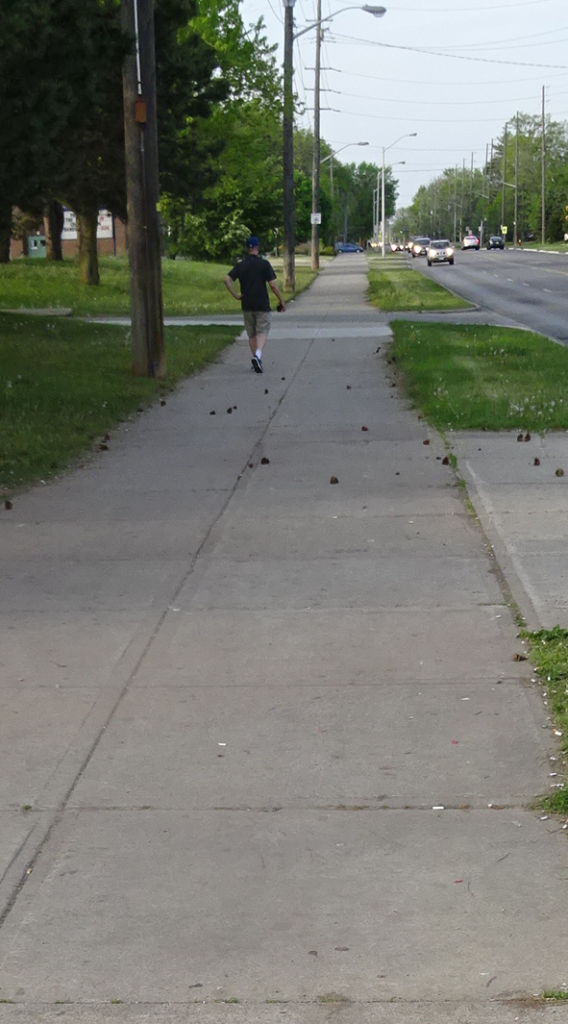 Many think that if there is going to be a cycle lane it could be on the median between the sidewalk and the road. One staff engineer told the Gazette one of the reasons for the medians was for possible bike lanes. Members of council who voted for the New Street road diet (all did except for Councillor Sharman) didn’t do much better. There is a confused public out there – they want answers and they aren’t getting them.
The New Street plan was to be a one year pilot project that got off to a poor start and didn’t get any better as the public began to learn more about the plans.
The understanding is that in a Phase 2 the city will look at physical separation between the bike lanes and vehicle lane – cement barriers
Ruth Langdon wants to know if barriers are going to be put in to protect cyclists from traffic whizzing by at 60km – how much will barriers cost? Will they be removed in winter, if so how much will that cost? If not removed how will plows work around them? Where will the bus stop, how will handicap vans function? How do they sweep debris from the curb lanes, do they need to buy another machine for that?
All reasonable questions – just no answers.
Langdon has arrived at the conclusion that “intensification plus implementation of bike lanes = more congestion.”
Alternatives to putting bike lanes on main roads is to improve existing bike paths(multiuse) and , pavement beside sidewalk-boulevards.
Chris Ariens, an avid cyclist and a member of the city’s Cycling Advisory committee said he wonders how many people on the on-line petition are non-residents. He said he had heard in conversation that some of the petition comments were from non-residents, but can’t say how many. He said he did read the petition a couple of weeks ago. “No indication of how many were from neighbouring municipalities but I did see Philip Waggett’s name there 3 times.
Ariens added that: “I understand that many people are upset about the situation, and there is a feeling of there being nothing in it for the 1/3 of the public who have zero interest in cycling and focused on getting where they need to go quickly.
“The payoff for them is many years away, which explains some of the negative feeling towards the project. The road diet is mainly a scapegoat for the larger issue of congestion – particularly on the QEW / 403 that plagues our city’s commuting experience.
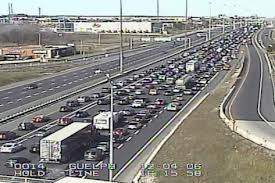 Is the New Street road diet a scapegoat for the larger issue of congestion – particularly on the QEW / 403 that plagues our city’s commuting experience asks a Gazette reader. “That congestion is the root cause, which providing more convenient multi-modal options should help address in the long run. That is why the data from this project is so important. But we can’t ignore the feelings either, because as we have seen, it is feelings that drive action at the ballot box, not data.
Ariens has said previously that he isn’t committed to bike lanes on New Street – he just wants to see data that supports any decision made.
The public does get bits and pieces of information from Dan Ozimkovic, Transportation Planning Technologist through his online communications. Nothing with any consistent detail from the city which is causing much of the angst. There is a sort of ‘if they aren’t telling us – then there is something wrong’ attitude prevailing.
Ozimkovic is pretty clear when he says: “The new street bike lanes are absolutely not a done deal, it will depend on if there is a reduction in accidents in that stretch and not a significant increase in travel times, all of which will be reported on.
 Existing traffic lane set up on the left. Pattern during th road diet for New Street. The drawing suggests there is some form of barrier between the cars and the cyclists – there isn’t – at least not during the trial phase. Ozimkovic is as strong with his words when he tells a resident that “I can guarantee you that New Street isn’t a done deal. This is a pilot project and staff will write a report to Council Fall 2017.
This report will include all of the feedback received regarding this pilot project as well as the traffic data that we collected prior to the start of this pilot project and during the pilot project.
In another email to a resident Ozimkovic reports that: “We have 3 months’ worth of data. You are absolutely correct, we aren’t able to collect any data now for the reasons you stated below (less sunlight to power the batteries that run the data collection equipment) but we will start collecting data once again as soon as the nice weather rolls around. From that point, we will collect data until the end of this pilot project.
“We recorded close to 53,000 travel time trips. This includes prior to pilot project and during the pilot project. We recorded these trips using the Bluetooth technology. The only other way to record travel time trips is by going out there with a stop watch and driving on New Street. We would never be able to get that sample size if we chose to record travel times that way.
Ozimkovic reports that all of this info is available on our project website www.burlington.ca/newstreetpilot –
Eva Amos, the other retired teacher who organized the on-line and the paper based petitions with Ruth Langdon asks: “Why not reverse this decision now based on 2141 signatures on an online petition opposing the New Street Diet, plus 500 signatures on a hard copy of the petition, add the many comments councillors have received directly from residents?
“Drivers do not feel safer, cyclists tell us repeatedly they will never ride their bikes in these bike lanes. They prefer Spruce Avenue, Lakeshore Rd or the Centennial Path. Residents on the feeder streets say traffic and speed have increased on these once quiet residential streets.
“The short merge lane is a major concern. Emissions from idling cars now sitting in the backlog at Walkers and New Street at peak times is also a concern. Trying to get onto New Street from Pinecove especially is a problem.
“At the beginning of this diet we were told data was being collected by the city transportation Dept and we could get updates there. Trouble is, this data has never been updated. The technology being used cannot collect data now in the winter months, the days are too short and the batteries are not charging properly. Data will again be collected once the nicer weather is upon us. So at best we will have data for a portion of this trial and none in winter?
“I also have trouble with the technology being used. It may be the best we have at capturing most cars but it does not capture every car. How many are missed. We have no way of knowing. As I understand it, a mobile device has to be turned on in the car in order for it to be captured and counted. I for one drive with my phone on. My husband turns his off when in the car, as does my neighbour.
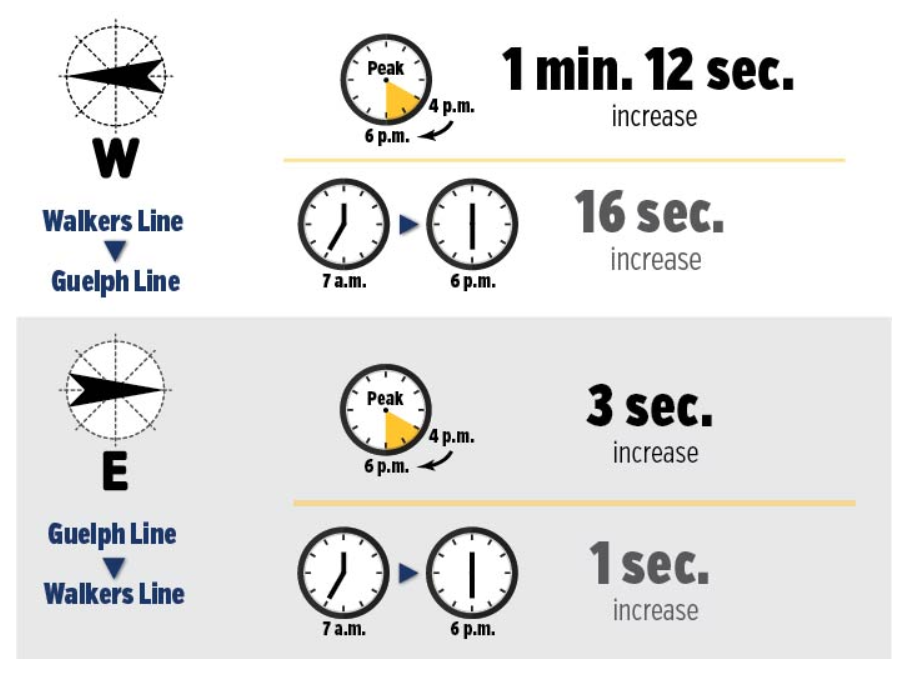 Time to travel between Guelph Line and Walkers Line with the road diet in place on New Street. A lot of people are going to experience heart burn when they see those times. Data comes from the city web site. “I find it almost insulting to the many drivers and residents of south Burlington trying to get from the east end to downtown or simply get home after a day’s work in a timely, safe fashion to tell them it only takes 72 seconds longer now to travel the distance between Walkers Line and Guelph Line.
“Based on resident’s daily experience it should read, after waiting in gridlock at Walkers and New Street or after waiting several minutes to make a turn onto New Street, it now takes 72 seconds longer to travel the distance.
“I don’t think we would have so many signatures on the petitions if it simply took 72 seconds longer to travel the distance as reported on the city website.
“Burlington is a bedroom community. People out of necessity have to drive to work or to the GO station. Burlington was never built as a pedestrian or cycling friendly city. Distances are too far between, shopping, services, appointments, sports activities. When I go to Toronto I take the GO train, and subway or buses to get around or walk. There is no comparison between the ease of getting around Toronto to Burlington on public transit.”
Eva Amos and Ruth Langdon have each lived in Burlington for more than 40 years. They are the epitome of decent people who expect decent services from their municipal government and straight answers to their questions.
Both were school teachers who met each other at the curling rink and now play golf together.
“New Street was a functional east/west road for years. Now with the population growing, Councillors decide to narrow this major east/west roadway. “I fail to see the logic. It seems I am not alone” – there are at least 2641 people who share that view.
This story isn’t over yet.
The online petition is still open and can be found at: bit.ly/newstreetroaddiet

 By Pepper Parr By Pepper Parr
November 5, 2016
BURLINGTON, ON
In response to the question: What happened? Ward 2 city councillor Marianne Meed Ward said she “ was hoping the discussions the city and board were having over the past year would lead toward a new MOU that would benefit both parties.
Meed Ward was talking about the significant change that has taken place in the way programs and services are being delivered at the Seniors’ Centre which is a piece of city property that the seniors use.
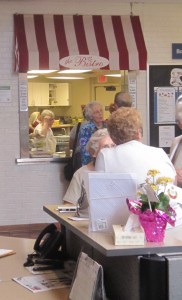 The Bistro, the heart of the Seniors’ Centre and the focal point for many of the administrative problems. The Seniors organized themselves as a not for profit – Burlington Senior’s Centre Inc. (BSCI). They elect a board which serves for a two-year period. It is that Board that has been “negotiating” with the city
There was a Memorandum of Understanding that set out who was to do what and who was going to pay what that had been put in place a number of years ago after considerable disruption and happiness on the part of the seniors.
There was a meeting a number of years ago that drew 300 seniors and they were not happy. The MOU seemed to settle things down.
Now things have flared up again.
 Joe Lamb wonders why someone didn’t call him. Joe Lamb, the person who negotiated a very fat deal for the seniors wonders why no one called him when things were going wrong.
The current president of the BSCI, a non-profit organization, hasn’t been able to make himself available for any kind of interview. Fred Hendriks issues media releases and doesn’t allow for any follow up.
Some of those with past board experience complain that Hendriks isn’t much of a communicator – they got that right.
Meed Ward adds that “With the recent change, members of the Seniors Centre should not notice any difference to services or programming.”
 Councillor Marianne Meed Ward listening to a senior. She continues: “The BSCI now has an opportunity to chart a new role for itself serving seniors in Burlington, and I have committed to stay on the board to assist them in this transition for as long as they would like.”
Meed Ward is the city representative on the Seniors Advisory committee.
There is indeed trouble in paradise. Don’t think this story has come to an end.
The seniors are one of the few really well defined groups in the city with a lot of time on their hands. They have in the past badgered city councillors with telephone calls when they weren’t happy.
The French have a phrase for it – some things never change – Et certaines choses ne changent pas.

 By Pepper Parr By Pepper Parr
October 27, 2016
BURLINGTON, ON
 A safe, secure, confidential place to call with information that will keep our streets safe. Everyone knows what Crime Stoppers is – we see their logo and sort of understand what they do. But has anyone told you the amazing story about how the organization got started – and the fundamental principle behind what Crime Stoppers is all about?
Greg MacAleese, who had just become a detective with the Albuquerque Police Department’s (APD) violent crimes unit, sat down during one of his shifts and started typing up some of his random thoughts. “I started focusing on why we have so much unsolved crime,” he said. “I realized it’s citizens who control the crime rate in any city. We don’t. We just react to it and most crime is solved with their help.”
Think about that – it is the citizens who control the crime rate – the police use the information they get to react to a crime.
MacAleese said eventually he wrote something along the lines of “Why don’t people come forward with information they have about crimes?”
The next logical question, he said, was how we get people to help us solve more crimes.
“They were afraid of retaliation or becoming a target of that criminal,” he said. “I thought if we allow them to remain anonymous they could tell us what they knew.”
 Fingerprinting, DNA and Crime Stoppers are descried as the three most useful tools police have going for them. And so was the beginning of Crime Stoppers, which now exists in every major city in the United States, Canada and countless countries around the world.
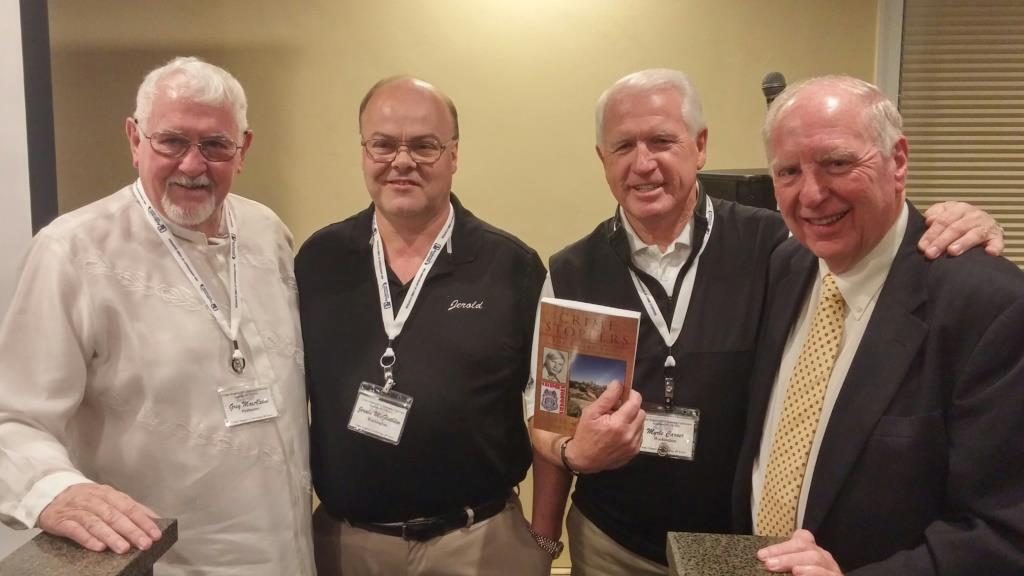 Greg MacAleese, Jerold McGlothin, Myrle Carner and Cal Millar at 40th Crime Stoppers anniversary banquet in Albuquerque. MacAleese recently published a book, co-written by Cal Millar, a former reporter and founding member of Toronto Crime Stoppers and a well know Burlington resident.
“Crime Stoppers: The Inside Story,” celebrates the 40th anniversary of the program by exploring crimes APD solved with Crime Stopper tips. The book is available on Amazon.
The program has become an irreplaceable tool in solving crimes for law enforcement officers and according to the book, a major crime is solved every 14 minutes because of Crime Stoppers tips. Police have recovered $2 billion in stolen property, seized $10 billion worth of drugs, and made more than a million arrests.
MacAleese realized there was a lot of apathy and said: “I knew money talked out on the street so I wanted to include a reward.”
An independent board of citizens was created to raise money for the rewards. MacAleese said initially he received some resistance from the APD with one of his superiors questioning why people should be paid to do their civic duty.
“I told him ‘You have a point,’” he said. ”But the fact is they aren’t.’”
The third and final component of the program, he said, was partnering with local newspapers and television stations to pass along information about unsolved crimes to the public.
Jim Busse was a Captain with APD when MacAleese started floating around the idea of the program. He said Albuquerque was still a “sleepy little town” in many ways but had its share of big-city crime. He said there was some cynicism about the program but that all disappeared when crimes started getting solved.
The idea took off very quickly,” he said. “Not everybody believed it would work. We had seen many programs come and go only to be reinstated with a new administration.”
A crime in July 1976 would give MacAleese the opportunity to launch his program and test its merit. Michael Carmen was a 20-year-old college student working at a gas station in the Southeast Heights in the early morning hours of July 25.
 Michael Carmen, a 20-year-old college student was murdered – that crime was the first crime to be solved through a Crime Stoppers tip. Armed robbers shot Carmen at close range with a .12-gauge shotgun. MacAleese believed they were worried that Carmen could identify them so he was killed to be eliminated as a witness.
Initially the police had no leads. The department put together a re-enactment of the crime that KOAT television broadcast on Sept. 8, 1976. The clip included a hotline number with a promise that all tipsters would stay anonymous.
“The phone started ringing immediately,” he said. “The second call was about a gang rape that happened a month before that we hadn’t been able to solve.”
The caller turned out to be a relative of one of the offenders and the information he gave led to the arrest of the three assailants, who had offered the young woman a ride after her car broke down in Downtown Albuquerque, New Mexico.
The sixth call, MacAleese said, broke open the Carmen case. A man who happened to live in the area said he recognized the car used in the crime and it belonged to a man in the neighborhood. MacAleese asked him to call back with an address.
A few hours later he did and after some surveillance police arrested Thomas Charles Boone and Lawrence Edward Tate. Boone was acquitted but Tate was found guilty and sentenced to prison for killing Carmen.
MacAleese, 69, now lives in the Cagayan de Oro in the Philippines, where he is an associate pastor. A widower, he traveled there years ago and met the woman who would become his second wife. They have two sons, 5 and 7 years old.
“What happened when my wife told me she was pregnant is that I realized it was a tremendous blessing,” he said. “I made a deal with God, even though that’s not what you are supposed to do, and I said ‘If you provide me with a healthy baby, I’m yours.’”
His first son was healthy and MacAleese dedicated himself to helping others by becoming a pastor.
APD, he said, solved almost 300 crimes the first year with the help of Crime Stoppers tipsters. Word spread and other police departments across the state and the country started establishing similar programs.
“You know we had success instantly,” he said. “They (other officers) would joke about my Crime Stoppers program but after that first broadcast, the guys started coming forward to me with their unsolved cases.”
 Cal Millar wrote a book of his own about Crime Stoppers. He has been very active with the organization in Halton Region. The Halton Chapter of Crime Stoppers gets about 100 tips each month. Of those, 20 are instrumental in solving local crime.
MacAleese was right: it is the citizens who control the crime rate – the police work with what they get from the people they are there to protect.
Cal Millar is part of that group that keeps the Crime Stoppers concept alive – because it works.

 By Pepper Parr By Pepper Parr
October 19th, 2016
BURLINGTON, ON
Wow!
THAT is crass.
Less than an hour after sending out a media release announcing the holding of two by – elections on November the province sends out a second media release announcing significant infrastructure projects for one of the ridings – Niagara West Glanbrook.
The by-election release came out as 12:07 – the infrastructure release came out at 1:01.
It is stuff like this that give politics a bad smell.
Was it just a coincidence?
The province has hundreds of communications specialists working to grind out media releases – sometimes as many as ten in a single day.
These people are trained to get out positive messages – and they are expected to be politically aware – especially those who work in the office of Cabinet Ministers.
The media release on infrastructure work that I to “Improving Roads and Bridges in Niagara Region” said the following;
Ontario is supporting upgrades to roads, bridges and other local community infrastructure in Niagara Region, helping to connect communities and keep people moving while creating jobs and economic growth.
Municipalities benefiting from upgrades include:
• Grimsby
• Lincoln
• Pelham
• West Lincoln
• Niagara Falls
• Niagara-on-the-Lake
• Fort Erie
• Port Colborne
• Thorold
• Wainfleet
• Welland
The boundaries for the riding of are shown below:
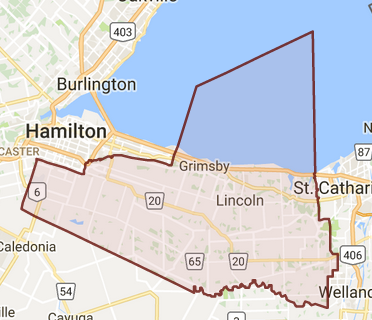 That detailed information is followed by the boiler plate stuff put at the end of every media release the province sends out – sort of like Burlington’s fetish for the news that it is the number one mid-sized city in Canada That detailed information is followed by the boiler plate stuff put at the end of every media release the province sends out – sort of like Burlington’s fetish for the news that it is the number one mid-sized city in Canada
Ontario is making the largest investment in public infrastructure in the province’s history – about $160 billion over 12 years, supporting 110,000 jobs every year across the province with projects such as hospitals, schools, roads, bridges and transit. Since 2015, the province has announced support for more than 475 projects that will keep people and goods moving, connect communities and improve quality of life. To learn more about infrastructure projects in your community, go to Ontario.ca/BuildON.
Investing in municipal infrastructure is part of our plan to create jobs, grow our economy and help people in their everyday lives.
They do all this with your tax money – don’t you just love them?
Related article: By-election announcements.

 By Pepper Parr By Pepper Parr
October 10th, 2016
BURLINGTON, ON
New Street is taking on mythological features – one of those things that happened and no one can really explain why.
It seemed like a good idea at the time – then “things” got in the way.
The Pier – that story is now part of the folk lore of the city – an expensive bit of our history.
Now we are asking the same kind of questions about the “road diet” New Street was put on.
 The road diet is the lane pattern on the right. It was to be a pilot project to find out if cyclists would actually use a main thoroughfare and what reducing the number of lanes of vehicular traffic would have on the flow of cars.
The price wasn’t bad – $210,000. It seemed like an idea worth pursuing.
Then the different interests got into the game – the cyclists, who were well informed and well connected at city hall, kept putting out what appeared to be solid information.
They were opposed by those who will enter the Pearly Gates behind the wheel of their cars.
It was difficult to get a civil dialogue going and the city didn’t help. To the best of our knowledge they didn’t issue one media release.
There is some information on the city web site where the statement is made that: “Currently, 60 cyclists a day use New Street between Guelph Line and Walkers Line.” That does not square with anecdotal evidence.
To date there does not appear to be anything in the way of measuring equipment in place on New Street between Guelph Line and Walkers Line to determine if just what the flows of traffic are at different times of each day.
The cyclists report that in a meeting they had with the city’s Transportation department there was detailed discussion about the technology to be used to measure traffic flows.
But nothing in the way of a media release from the city.
We then learn that parts of New Street are under repairs – something to do with grates in the road which apparently is going to limit usage by cyclists.
What?
Road construction is taking place while a pilot program is underway?
Did one department not talk to another?
New Street is a road managed by the Region. The people in Burlington’s Transportation department are in touch with the Region daily.
James Ridge, the city manager, created a Leadership Team that meets once a week to go over what is being done and the status of the various projects. Every Director and Executive Director is reported to take part in those weekly meetings. A pretty good way to manage a city.
Did someone in one of those Leadership Team meetings not mention that the Region was going to be doing some work in the gutters of New Street between Guelph Line and Walkers Line?
Apparently not.
Transparency and accountability fit into this scenario somewhere. When do we send in the clowns?
Related article:

 By Pepper Parr By Pepper Parr
September 23, 2016
BURLINGTON, ON
It’s gone
Two willow trees went first followed by the destruction of the gazebo that once sat in a small bowl of land at the east end of Spencer Smith Park.
The Gazette first reported on this last May when a city staffer quietly mentioned the plans during a Jane’s Walk put on by the Sustainability Advisory Committee,
There are some good reasons for the changes that are being made.
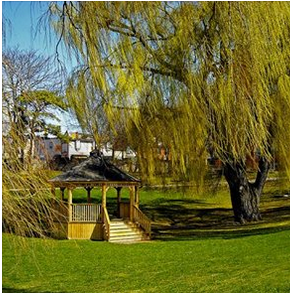 The old gazebo and the willow trees that used to keep it company are gone. No new Willow trees but there will be a new gazebo and a pathway carved into the park leading to it. The bowl of land tended to collect water – and when we get rain we get a lot of it.
The Gazebo that will go up on the spring will be a little bit bigger and it will be accessible and it will be located a little to the west of where it was and set back further from the water’s edge.
There will be a new pathway leading to the gazebo.
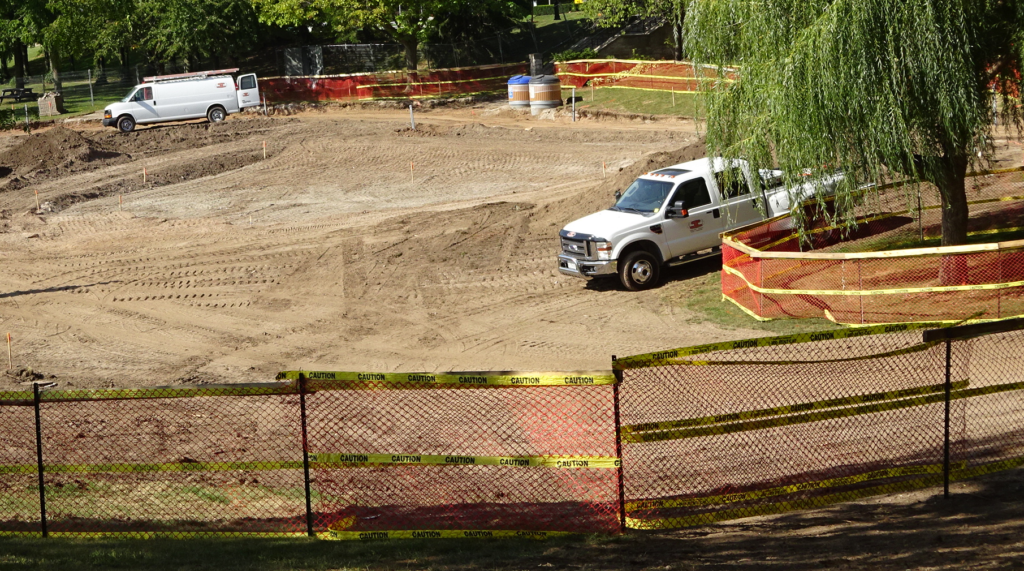 The new gazebo – slightly larger and accessible will get put up in the Spring in that area in this photograph, upper left. 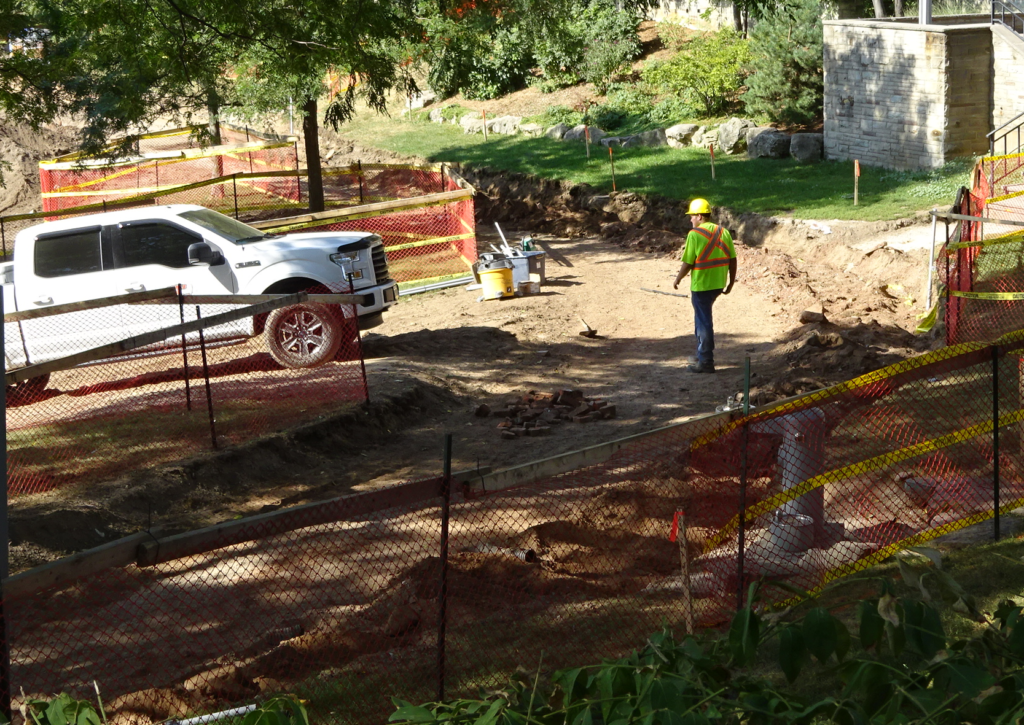 A new pathway is being cut into the park that will lead to the gazebo’s new location. You would not know any of this had you not been a regular Gazette reader.
But there is a bigger story developing around the changes to the gazebo.
The Waterfront Hotel to the immediate east of Spencer Smith Park, currently an eight story structure will undergo a significant change if the talks underway between the city and the hotel ownership come to a positive conclusion.
The plan it to tear down the hotel and put two – perhaps three structures in place. A new hotel would be something in the order of 20 storeys – similar to what the Bridgewater condominium that is east of the Waterfront Hotel.
The thinking the Gazette last heard was for the hotel property to be re-oriented so that it looked west right down the Naval Promenade at the edge of Spence smith Park.
If all this comes about – the downtown core of Burlington will have a totally different look.
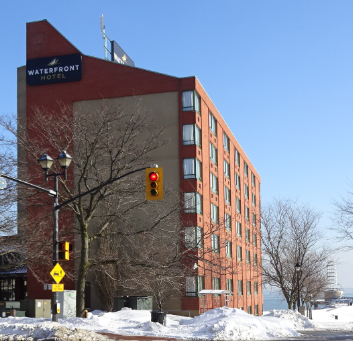 If the talks taking place come to fruition – this structure will come down and be replaced by two – perhaps three – buildings that will be south of the current Waterfront Hotel. Add to that a dream a developer has to put two – perhaps as high as 40 storey structures – on the north side of Lakeshore Road between Brant and John Street.
For the immediate future – look for a considerably different look to the eastern end of Spencer Smith Park in the spring.
The one thing you will probably not see next Spring is any work being done on those two Windows to the Lake that were supposed to get built between Market and St. Paul.
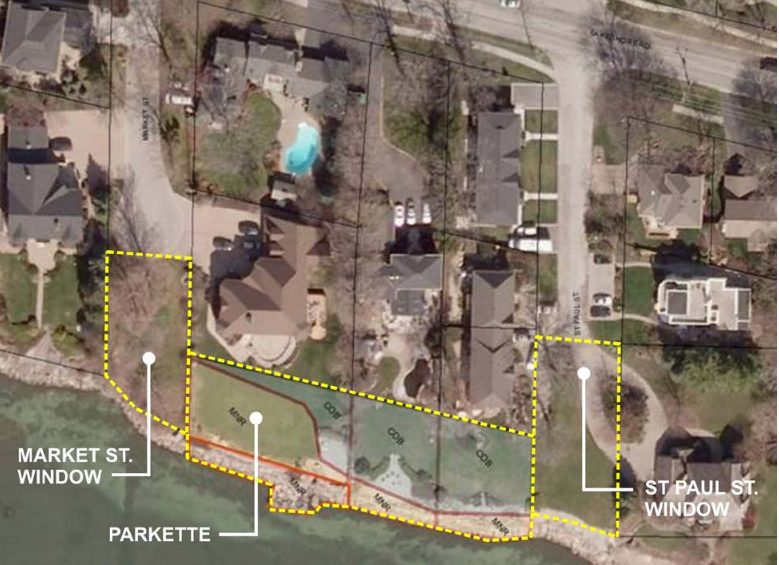 The Market Street Window on the Lake and the St. Paul Street Window on the Lake haven’t even been started yet. What’s taking so long? The money for those is in the bank – that came from the sale of an incredibly precious stretch of edge of lake land the city sold to property owners whose land abutted what was once public land – a dream opportunity that got away on us.

 By Pepper Parr By Pepper Parr
September 6, 2016
BURLINGTON, ON
What are the rules that a developer has to follow when they decide they want to put up a tall building? And do they have to follow those rules?
The Planning department commissioned a document, at a cost of $20,000, and have come out with a decent document (we aren’t qualified to say if it is a good document or an excellent document) that is well illustrated.
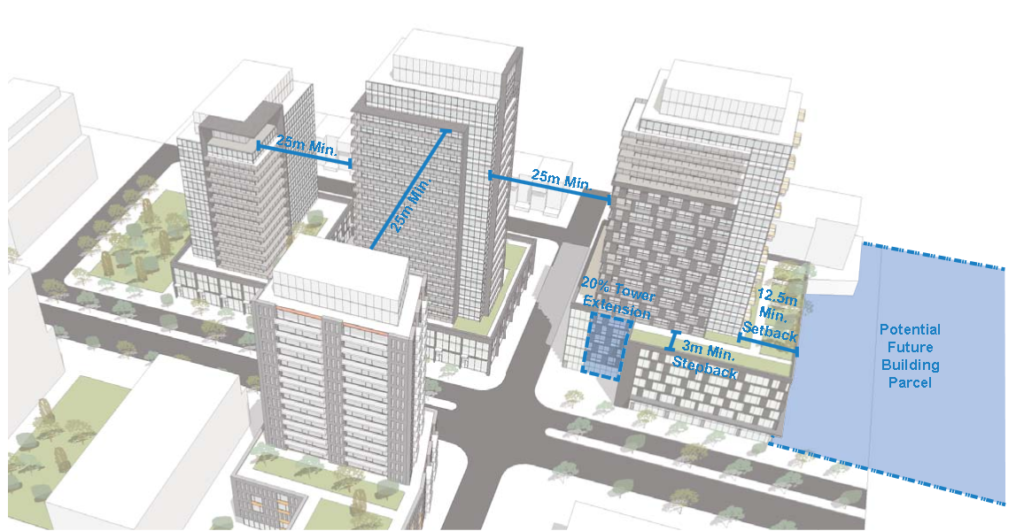 The placement of a tall building and its relationship to the street scape is set out in the Guidelines. Many will wonder if the ADI Development Group’s Nautique at Martha and Lakeshore Road meet these guidelines. The document is described as Tall Building Guidelines – prepared by the Brook/McIlroy organization that has done a lot of work for the city during the past two – maybe three decades.
They are the group that did much, if not most, of the early design work for the Beachway Park that is in the detailed planning stage.
The development pressures of intensification and tall buildings are becoming increasingly evident. When carefully designed and located, tall buildings become a distinct and defining component of a city’s character, forging a memorable skyline and establishing city landmarks.
Tall buildings are defined as anything over 11 storeys.
Tall building guidelines play an important part in how the City grows. They will help build communities with quality of life and quality of place, and fulfill part of the new Grow Bold strategy by building up, building smart and building beautiful.
Should council endorse these tall building guidelines, they will be implemented immediately and used to evaluate all proposed tall buildings in the city. The guidelines will also be used to influence future tall building policy through the official plan review process. The planners expect these guidelines to become a living document that is updated and amended from time to time to reflect future trends in tall building design.
Design considerations will become an explicit part of all development applications.
Due to the immediacy of preparing these tall building design guidelines, staff were unable to present them at a formal meeting with the the Burlington Housing and Development Liaison Committee (HDLC). The immediacy of preparing the document as the reason given. Immediacy and planning are not normally words that appear in the same sentence.
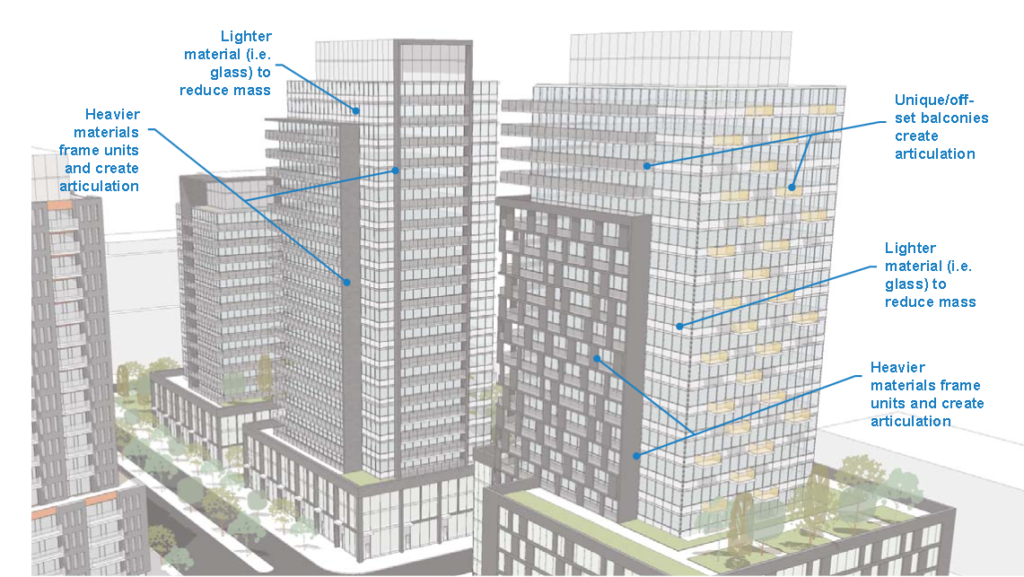 The Tall Building design guidelines serve as an excellent introduction on what the city planners would like to see. The Planning department has met individually with some tall building developers to discuss in advance of presenting the guidelines to the Development and Infrastructure Committee.
This is a document that deserves public attention – it will be referred to frequently as council discusses development applications.
The complete document is available HERE
It is on the Development and Infrastructure Standing Committee agenda for Tuesday of next week, the 13th – at 1:00 pm. This should have been a matter discussed and debated in the evening to ensure better public participation.

 By Pepper Parr By Pepper Parr
August 30th, 2016
BURLINGTON, ON
The heat is clearly on – staff in the city’s transportation department have taken to thanking people who have used various means of communication to let the city know how they feel about the “road diet” New Street has been put on while the city experiments with dedicated lanes for bicycles on the north and south side of the street between Guelph Line and Walkers Line.
The decision to spend the $250,000 on the pilot project was made by city council July 18th.
It is a change – and people don’t really like change – particularly in Burlington.
 Director of Transportation Vito Tolone is a well informed on transportation matters. What he could not be expected to know was how the public was going to react to the idea of putting dedicated bicycle lanes on New Street. Members of council are supposed to know what their constituents think. In a media release the city said they wanted to thank the hundreds of people who have taken time to comment about the New Street road diet one-year pilot program and assure people that their comments are part of the findings of the pilot.
The Gazette recorded more than 60 comments to which we add the 21 that we did not publish due to the offensive language; some people got very exercised over this one.
It is unusual for city hall to put out a media release – before a project has had a chance to create some data. While there will be data – right now there is just a lot of noise.
Vito Tolone, director of transportation for the city said: “We are hearing what residents have to say, responding to a variety of questions and reading and collecting each comment to include in our pilot findings.” He adds that the “road diet is a one-year pilot program that aims to create a complete street that allows for multiple forms of transportation and enhances the safety of the road for motorists, cyclists and pedestrians.
“Through the city’s strategic plan process, we heard from residents who told us they would like safer places to cycle and more transportation choices when it comes to getting around their city,” said Tolone. “Throughout the one-year pilot, the city is using technology to track all forms of transportation along this stretch of New Street, including cyclists, pedestrians, buses and cars. We will also be collecting data on the average speed travelled and the number of collisions to help us understand how the road is being used.”
 Six of the seven voted for the New Street Road diet – Councillor Sharman voted against the pilot project. Tolone said his department is going to collect “four seasons of data in 2017”; one can only hope that with the uproar, and this is certainly an uproar, that the city will not wait until it has all the data in hand – regular reporting to the public goes a long way to meeting that “transparency and accountability line” that the city trots out regularly.
The pilot looked like a reasonable approach – what neither council nor staff was prepared for was the reaction – most of it before the pilot really had a chance to start. Council voted 6-1 for this (Sharman voted against it – what does he know that the other six don’t know).
 Existing lane configuration on the left – the road diet on the right. New Street is due to get a new asphalt surface in 2017 – council thought this was a good time to do a pilot project before they began laying down the new surface, when the section of New Street between Guelph Line and Walkers Line is scheduled to be resurfaced.
Conducting the pilot project before this work takes place means there will be no added cost to either return the road to its current setup if the pilot is not successful, or to keep the new bike lanes if the pilot program is adopted.
The pilot project now has the distinction of having a page of its own on the city web site. For more information about the New Street road diet, including responses to some of the most frequently asked questions from the community about the pilot, please visit www.burlington.ca/newstreetdiet.

 By Pepper Parr By Pepper Parr
August 24, 2016
BURLINGTON, ON
The new web site is now accessible. Looks pretty good. The search engine is very good. More comment to follow.
The Halton District school Board announced with some fanfare that their new web site was now live – click to get to it.
They get an e for effort but they fail at the execution – the site doesn’t load.
It will – they will fix it. Usually things like this are tested, tested and tested again before going live.
 In their media release the board does say some functions may not be accessible to users. These functions may take 24-48 hours to deploy. “We appreciate the patience of parents/guardians, staff and community members as we work to get the website fully operational to provide an improved web experience.” In their media release the board does say some functions may not be accessible to users. These functions may take 24-48 hours to deploy. “We appreciate the patience of parents/guardians, staff and community members as we work to get the website fully operational to provide an improved web experience.”
“The new website – which will use the same www.hdsb.ca web address – is designed with parents/guardians particularly in mind. The fresh clean look, designed by web developer eSolutionsGroup, will provide users with accessible content which is enhanced with photos of Board students and staff members.”
The new homepage uses the latest web design elements to effectively bring users’ attention to important updates. Remaining on the site is the popular Spotlight on Schools feature where the Board shares news on engaging learning experiences in schools. The new website will include video options as another way to engage users and assist in conveying the exceptional learning taking place in our 105 elementary and secondary schools. News releases will have a prominent place on the new website, keeping stakeholders up to date on Board decisions, changes and key events and dates taking place throughout the school year.
The homepage will allow user’s quick access to many popular topics such as Find my Local school, Report a Student Absence, Transportation and Program Accommodation Studies, plus get the most recent social media updates. There will be large sub-menus to make navigation faster, an improved search engine and a translation function.
Beginning in the design phase, the Board gathered input from school communities to learn what they wanted to see in a new website. Several parent and staff focus group sessions were held in various parts of the region to ensure many voices and opinions were heard.
Given the increasingly mobile world we live in, the new website will operate much better on smartphones and tablets, making for a better user experience.
The old web site was almost a disaster – upgrading what they had was one of the leading priorities for Director of Education Stuart Miller.
We will let you know how it works – when we see it.

 By Staff By Staff
August 22, 2016
BURLINGTON, ON
Mayor Rick Golding uses a number of media to reach the citizens he governs. In an article he posted to his blog on the city’s web site he had the following to say on the decision made to put parts of New street on a Road Diet.
A road diet is when parts of a road used for vehicles is re-purposed and used for bicycle lanes
This summer, Burlington City Council supported a staff recommendation for a one-year pilot for bicycle lanes on New Street between Walker’s Line and Guelph Line.
As you are likely aware, the majority of council (6-1) supported this decision. It was our team of transportation experts that recommended what is being called a ‘road diet’. Simply put, that means taking New Street from four lanes to three lanes (two travel lanes and a centre left turn lane), with bike lanes separated by painted buffered lines on each side.
There are a few key things to note as we measure data and carefully listen to residents during the bicycle lane pilot project on the two-kilometre stretch of New Street:
 The current New Street lane configuration is on th left with the “road diet” on the right. This is a pilot project scheduled to last one year. Our staff will be tracking detailed data and we invite feedback from everyone using that stretch of the road.
The pilot is a litmus test to see if the painted lanes result in a positive experience for people who want to ride their bicycles, while causing a minimal impact for drivers who also need to get where they are going in a timely manner.
The pilot aligns with strategic planning – Transportation, health and environment
A key direction of our new Strategic Plan, which identifies priorities for the next 25 years, is a City That Moves. We want to increase the percentage of people using alternative transportation including cycling on a regular basis and not just for recreational purposes. The car has a 50 to 60-year head start when it comes to our city. A large part of Burlington was built when land and gas were plentiful and cheap. We are now trying to retrofit our city with more options than driving. Another key direction of our new Strategic Plan is A Healthy and Greener City.
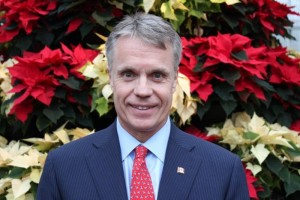 Mayor Rick Goldring Halton Region recently released an Active Transportation Health report, which was discussed at Halton Region’s health and social services committee meeting on Feb. 8, 2016. The report states 39 per cent of Halton residents, aged 12 and older, were inactive during their leisure time in 2013/2014. The report recommends using active transportation, including cycling, to improve health. (Read more here: https://www.thespec.com/news-story/6306140-halton-residents-aren-t-getting-enough-physical-activity-halton-report/). Furthermore, 40 per cent of greenhouse gas emissions produced in Burlington is from automobiles. There are significant opportunities for a greener, healthier city with a wider variety of transportation opportunities if we start investing now.
The timing is appropriate for this pilot project
 The city held a public information meeting on the project – it was not hugely attended – almost as many staff on hand as here were taxpayers. The decision to proceed with the project was approved by city Council on a 6-1 vote. Councillor Sharman voted against the idea. Does he have the best political antenna? This is an ideal time for the pilot to be done as this section of road is scheduled for resurfacing in 2017. This means there will be no cost to revert the lanes if the pilot is determined to be unsuccessful by staff and ultimately, council, or keep the new lane configuration when the road is resurfaced.
Meanwhile, city staff has assured me New Street west of Guelph Line will be reopen to the public in mid-August before the pilot starts east of Guelph Line. There will still be ongoing works on the boulevard (sod, driveways) but this will be limited to minor lane closures. All work will be done on this section prior to Labour Day weekend.
We will be watching the pilot closely
I live by New Street and as such, take it every day, at different times. I will experience first-hand the traffic delays, if indeed there are any.
The key measurement for me will be the impact on the automobile driver. If there are significant traffic issues as a result of this new configuration, we can simply repaint the road. This one-year test allows us to see if New Street is the right place for bike lanes.
Staff will be collecting data on travel times and residents are invited to share their feedback at any time to mayor@burlington.ca. My office will share this information with council and staff.
The pilot is a more direct route offering more destinations than the bike path
The multi-purpose pathway from Burloak Drive to Martha Street is good for recreational cycling. However, it is a busy mixed use pathway that includes not only cyclists but walkers, skateboarders, walkers with dogs and young children. A friend of mine broke his wrist after a young child darted in front of him causing him to slam on the brakes and fall. This means it is not ideal for people cycling along the pathway for transportation, especially when travelling at higher speeds.
The pathway is also not useable when it is dark as the average light from a bicycle is not bright enough and does not shine far enough to create a safe ride. The pathway is not lit at night. There are also numerous crossings where vehicles have the right-of-way. Furthermore, the pathway does not provide meaningful connections to the many amenities right along New Street.
The Mayor does indeed use New Street regularly. It will be interesting to see if he chooses to take the bus and experience whatever delays there might be.
The Gazette recently wrote a piece on the debate that was taking place and suggested that the public needed to give the city staff the time they needed to complete the pilot. That article brought in more than 35 responses several of which added valuable information to the debate.
This is an issue that has aroused the public, one reader advised us earlier today that “I noticed yesterday that someone had written WTF across the signs on New St promoting the road diet. I went back this morning to take a photo for you, but the signs have been removed. Work is underway.”
And so is the debate.

 By Pepper Parr By Pepper Parr
August 5th, 2106
BURLINGTON, ON
The Air Park has taken on a legal life of its own that just may see Court cases that make their way to the Supreme Court of Canada – the issue is that significant to the municipal sector.
The judiciary and economic development are tied together, not always in the nicest or the most comfortable manner. One tends to bump into the other when interpretations of a bylaw or a regulation is needed. That bumping into each other has kept the city’s legal department busy
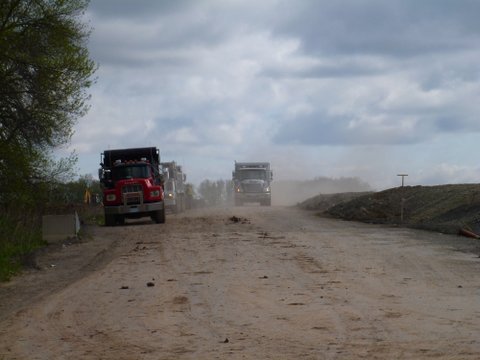 Trucks dumped tonnes of land fill on the air park site without having a site alteration plan approved by the city. There are people in Burlington who see very significant merit in their being a small well run airport in the rural part of the city.
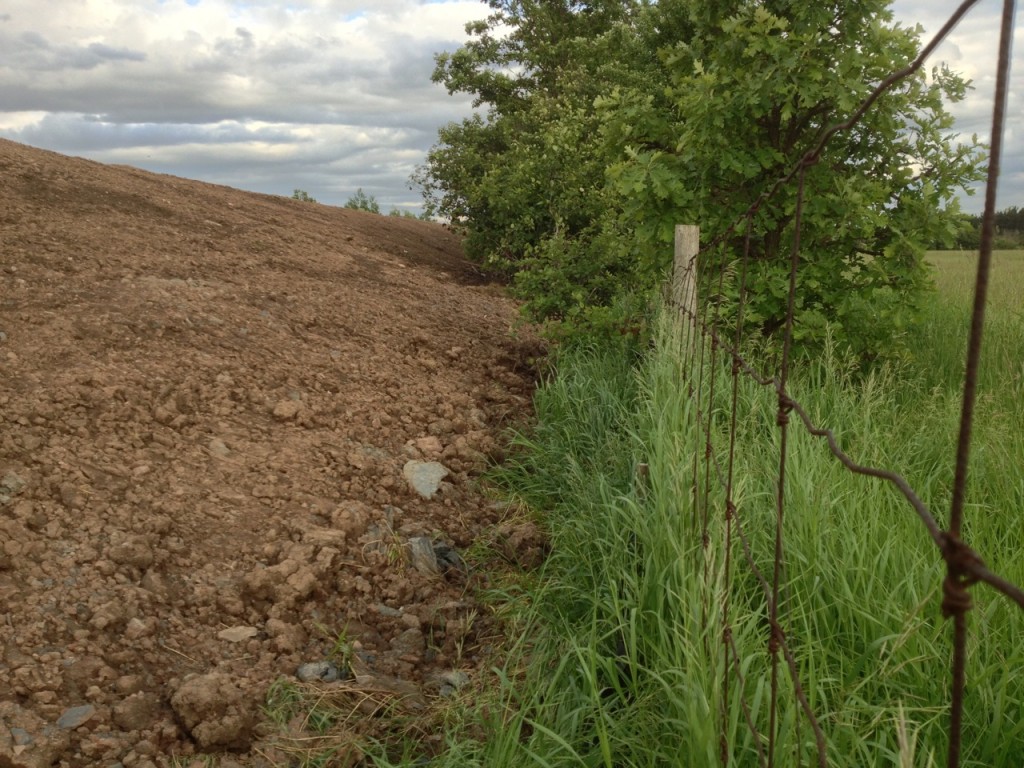 Fill from the Air Park tumbles down a slope and rests against the property line fence of the Cousin’s farm on Appleby Line. Water run off has flooded parts of the farm. Most of the residents in north Burlington don’t have a problem with the air park – they do have a problem with what the owner of the property wants to do with the almost 200 acres of land that had 500,000 tonnes of land fill dumped on it without permission or acceptable testing by the municipal government.
Business people, especially those in the development field, understand what they call the long game – find property that will increase in value and has significant development potential and invest in it. Developers look for that patient money; the site one which the Bridgewater condominiums are being built first came to the public eye when Mayrose Tyco assembled that land in 1985.
The air park has been around for a long time; for the past decade or more it has been a contentious operation. The owner has brought a unique business style to how he has chosen to develop the opportunity he feels the site has and in the process has alienated his neighbours and run afoul of the city and to a lesser degree the Regional government.
The development game has changed; it is a lot more collaborative and developers are learning that municipalities have strengths they have not utilized in the past.
And Burlington is beginning to realize that citizen groups do not have to be just reactive to things they do not like but can be proactive and advocate for levels of change.
In Burlington the Sustainability Advisory Committee has real clout and influence; Heritage issues were basically outsourced to the Heritage Advisory Committee who put together a program that council liked. When the outline of that program was first revealed city council came close to giving the advisory committee a standing ovation.
There is room and opportunity now for responsible citizens groups to do their homework and take well researched proposals to city council.
While it will be a bit of a challenge for this city council, the time is ripe for city councils to listen more closely to some of the ideas that are brought forward.
There are also new and more collaboratively minded city staff who are capable of listening to the people who provide the money to meet the payroll.
Municipalities are at that talking the talk when the mention transparency – citizens have chosen to believe what they said and now expect those people to walk their talk. Done properly it comes out as responsible government – on of the corner stones this province was built on.
 All the key players in the Airpark dispute: The time is not right yet to expect the kind of leadership that is needed from the elected officials; too much dead wood on the current Burlington council. But it is time and the opportunity is there for the private sector that is much more responsible than the development community has been in the past to quietly develop ideas and opportunities to advance potential
Getting any air park development in rural Burlington from economic developers is going to require more than just an initiative from the economic developers and consistent nudging from the city’s Economic Development Corporation.
The city itself has to realize the potential and want to see that potential grown and the people in rural Burlington are going to have to be a significant part of that process.
 During a council chamber foyer conversation, city manager Jeff Fielding made it very clear to Glenn Grenier, second from the left that the city did not share his view that the Air Park did not have to comply with city bylaws. Grenier had positioned himself as a leading expert in aeronautical law and that the city should respect their rights. The city didn’t believe the Air Park actually had the rights they said they have; that view was upheld by both a Superior |Court judge and an Appeal Court decision. The city’s legal counsel stand to the right. A very small percentage of the people in Burlington are fully aware of the current air park issue and the legal battle that has been going on for more than five years. The upside to that battle is that it hasn’t cost the city all that much – their legal counsel keeps winning the court cases and getting costs on a rather financially attractive basis. It isn’t a profit centre but it is a nice way to do business.
When the rural community became aware of what at was going on they did what every community does; they formed an organization – the Rural Burlington Greenbelt Coalition, which itself is a collection of citizen interest groups – and delegated to city hall – very effectively. Monte Dennis had years of experience battling the development of the once planned airport at Pickering; he was part of that crew that did everything possible to prevent the destruction of a community when the province expropriated hundreds of acres of land for an airport development in Pickering. That was 40 years ago – the houses and community are gone – but there is no airport in Pickering.
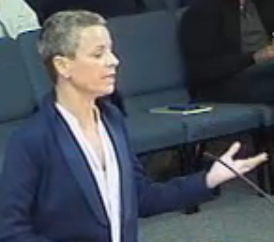 Vanessa Warren delegated to city council on the landfill work being done at the Air Park and the impact it will have on her property – and the larger community as well.  Monte Dennis delegating before city council. If it wasn’t Dennis delegating for the RBGC at city hall or the Region, it would be Vanessa Warren who was always exceptionally well prepared: she tended to know more than anyone else in the room.
Despite the talent within the RBGC they have yet to capture the public imagination. A large part of that is their all but total reliance on social media to get their message out.
Social media has its place but it isn’t the silver bullet that always delivers.
Going forward one can hope that the RBGC people can learn to partner or at least collaborate with the better parts of the economic development community and make the best possible use of the air park property for both the land owner and the wider community without any development distorting or damaging the community.
Few in rural Burlington have a problem with a small private aircraft air park- many very close to the air park kind of like the sound of the light air craft landing and taking off.
 Vince Rossi, believed to be the sole owner of the Air Park. There are opportunities for some “good jobs” economic development at the air park. Small engine maintenance – even possibly some mid-size aircraft maintenance. Properly managed the air park could handle much more small craft traffic.
RBGC needs to be before city council regularly, prodding and poking and providing the visionary leadership that is badly needed. They certainly have the talent and if they are consistent they should over time bring about the shift that is needed.
One wonders where the Regional government is in all this. There are dozens of municipalities that oversee the operation of small airports in their communities. Neither the chair or the region’s administration appear to have much in the way of appetite for an air park in Halton and Burlington’s city council representatives at the Region have never been able to pull together as a single cohesive voice that takes a position and makes it stick.
There is much work to be done.
Could the air park already be in play without the owner even knowing about it?
Full disclosure:Pepper Parr, publisher of the |Gazette, Monte Dennis and Vanessa were sued by the Air Park Inc for libel in 2013. The case has yet to get to trial.

 By Staff By Staff
July 19th, 2106
BURLINGTON, ON
At this rate we may not need a city hall.
Another city hall service has gone on line: business licence renewals.
Select businesses in Burlington can now renew their business licences online at www.burlington.ca/businesslicences.
 “We need to support our small businesses as much as possible and that means giving them access to services 24 hours a day, seven days a week,” said Mayor Rick Goldring. “A step in the right direction is that businesses can now renew their licences online whenever they want.” “We need to support our small businesses as much as possible and that means giving them access to services 24 hours a day, seven days a week,” said Mayor Rick Goldring. “A step in the right direction is that businesses can now renew their licences online whenever they want.”
Business licences available to be renewed online include:
• Automotive
• Pawn brokers
• Personal services
• Public assembly:
o Restaurants/take out/lunch counter
o Movie theatre
o Banquet/public halls
o Pinball or electronic game machine
o Night club
o Sale of foodstuff
o Sale of adult magazines
• Sale of foodstuff
• Sale of tobacco
• Salvage yard
• Tourist/trailer camps
Business licences not listed above are only available for renewal in person.
 Tracey Burrows, manager, bylaw enforcement and licensing. “Business owners needing to renew their licences will need to register an account with their PIN which can be requested online,” said Tracey Burrows, manager, bylaw enforcement and licensing. “We hope this will add to our customer service and meet the needs of our growing business community.”
All new and renewal licences can also be done in person at City Hall, 426 Brant St. For more information, visit www.burlington.ca/businesslicences, call 905-335-7731 or email building@burlington.ca.
No mention of the fee structure in the media release.

 By Staff By Staff
July 18th, 2106
BURLINGTON, ON
Construction of the patient tower is moving along nicely. The last window on Level 7 of the new patient tower was installed at the end of June! Soon, two elevators will be up and running on the inside of the building and the man and material hoist will be removed.
The pedestrian bridge structure connects Level 2 of the parking facility to Level 1 of the new tower. Now the construction team is building the metal deck on the floor and on the roof of the bridge and pouring the concrete floor. By the end of July, glass windows will be installed on the bridge and roofing and finishes will follow.
Power will be turned on in late September.
In their latest video, Alean Jackman, Operational Readiness Coordinator and Melanie Burnet, Program Champion for the Surgical Program share the 5 Things You Need to Know about Our New Surgical Suite. Enjoy a behind-the-scenes look at the progress being made inside our future surgical suite and learn more about the new space from our experts!
In the past the hospital has had problems with infectious diseases. The new hospital will have three new washer disinfectors that have greater capacity for cleaning and processing clinical equipment. The machines also have fast and efficient cleaning cycles, larger touch screens, and built-in “cool touch” handles on the racks.
Inside, installation of drywall continues to progress from the Main Level to Level 7 and soon, ceilings will go up. Painting has started and the main lobby staircase will be installed by late summer.
The people who will make the hospital actually work on a day to day basis are involved in critical training programs; much of the equipment is very complex and requires training and practice before nurses roll you into one of the ten new operating rooms – nine of which are reported to be ready for business on opening day.
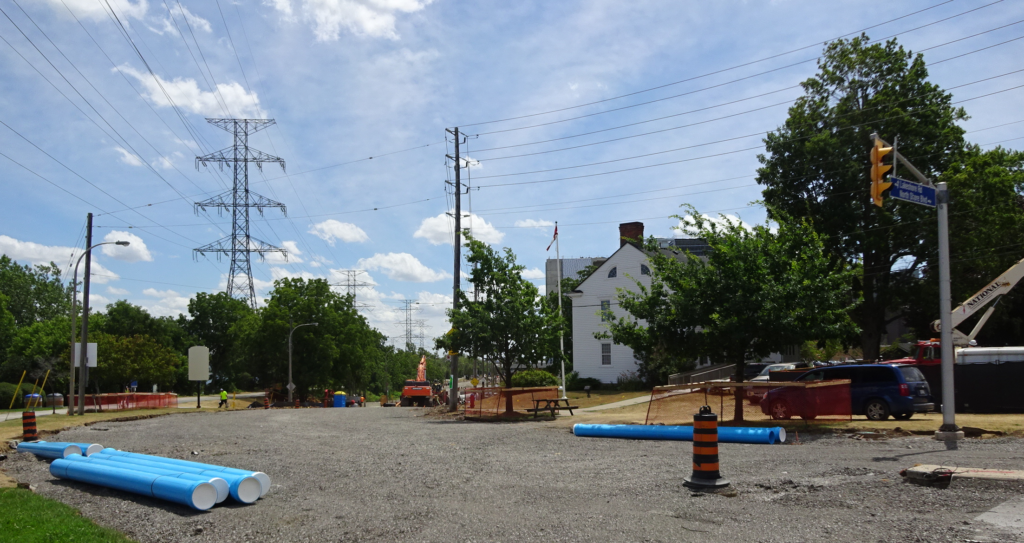 A new Lakeshore Road is being constructed that will lead to the new front entrance to the hospital. The construction and re-development of the hospital takes place while the city re-builds the part of Lakeshore Road that will become the new front entrance to the hospital. Parts of Lakeshore Road are being raised by as much as a metre from their current level. The re-built road will slowly slope towards the parking garage where the rebuild will pause until the hospital is completed in 2018.
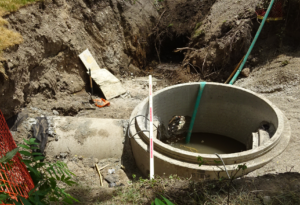 Storm water around the hospital has always been an issue – one that hospital media management people don’t like to talk about very much. 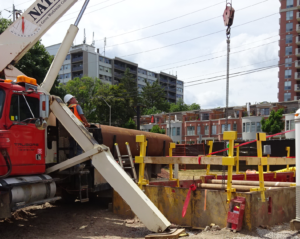 Big 20 inch pipes being shoved under North Shore Road to connect properties north of Lakeshore to pipes running along Lakeshore right past the hospital to the Waste Water treatment plant. Traffic in the area has been re-routed in several directions while the construction work takes place. Waste water treatment and storm water facilities are also being upgraded as well.
A 20 inch pipe is being shoved under the Lakeshore Road, North Shore Road intersection from the Brant Museum property to connect waste water pipes to the main trunk line.
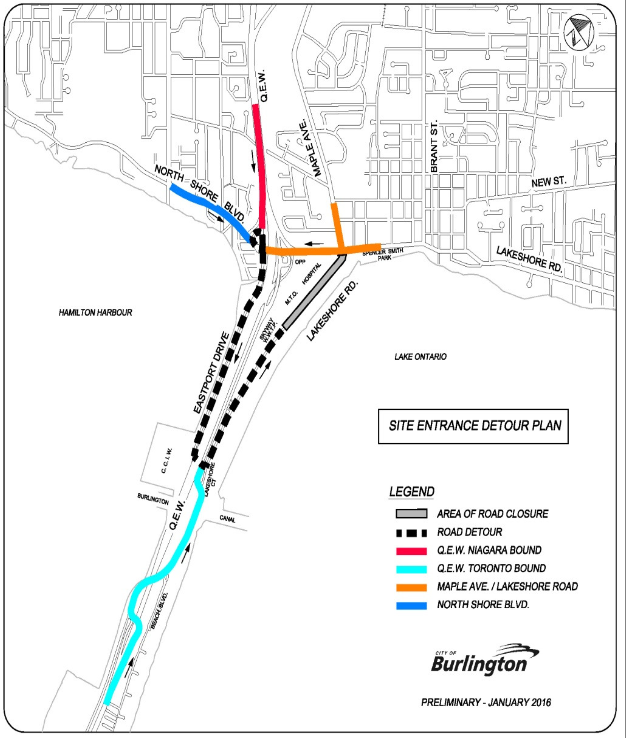 These are the detours that are going to be in place until road re-construction is complete – sometime in September. It is not a pretty place for traffic these days – and it is going to remain that way until late in September.

 By Pepper Parr By Pepper Parr
June 4th, 2016
BURLINGTON, ON
In a media release the city said: “In order to add comfort and enhance customer service, Burlington Transit is adding benches to 57 bus stops around the city. Some bench installations will require a concrete slab to be poured first.”
Maybe service is going to become so sporadic and unreliable that they want customers to at least have a place to sit while they wait?
The locations were chosen based on areas that have busier pedestrian and vehicular traffic and public space available.
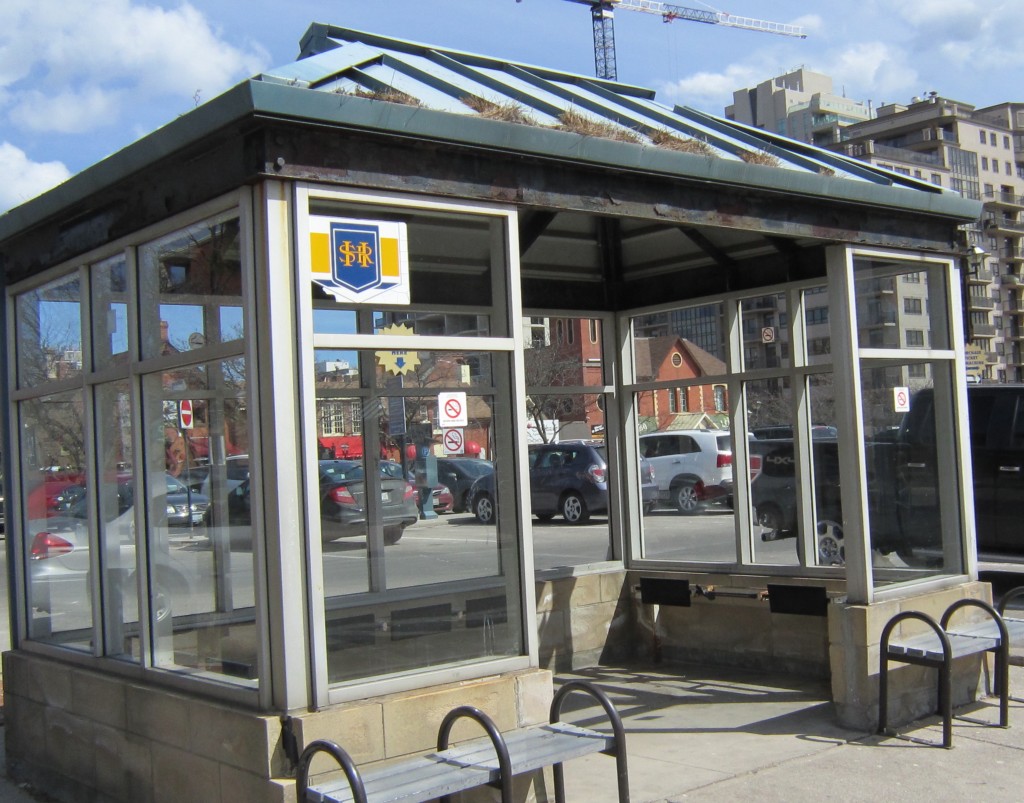 The seats in this transit shelter are truly pathetic. Hopefully the new benches being placed are more usable. “Providing benches will provide a more comfortable place to rest while waiting for a bus,” said Mike Spicer, director, Burlington Transit. “Taking Burlington Transit should be a pleasant experience and it begins at the bus stop.”
The bench expansion is already underway and will continue as weather permits throughout the summer and into the fall, if needed.
Something you wanted to know – the locations of those benches. The number at the front identifies the bus stop,
433 – Lakeshore Boulevard at Burloak Drive
1003 – Lakeshore Boulevard at Kenwood Avenue
3 – Lakeshore Boulevard at Torrance Street
751 – Lakeshore Boulevard at Brock Avenue
755 – 1340 Lakeshore Blvd.
72 – New Street at Guelph Line
185 – New Street at Walker’s Line
184 New Street at Walker’s Line
495 New Street at Hampton Heath
557 – 5514 New St.
453 – Appleby Line at Fairview Street
388 – Fairview Street at Inverary Road
206 – Fairview Street at Woodview Street
95 – Fairview Street at Drury Lane
64 – 2065 Fairview St.
785 – Plains Road at Francis
767 – Plains Road at King Road
759 – Plains Road at Long Drive
832 – Plains Road at Downsview
833 – 127 Plains Rd.
162 – Harvester Road at Guelph Line
264 – 3450 Harvester Road
248 – Upper Middle at Mountain Grove
326 – Burlington Heights Centre
1030 – Upper Middle Road at Guelph Line
922 – Upper Middle Road at Country Club
628 – Upper Middle Road at Heron Way
269 – Brant Street at Hazelton Boulevard
200 – Brant Street at Havendale Boulevard
110 – Brant at North Service Road
102 – Brant at North Service Road
33 – Guelph at Lakeshore
77 – Guelph Line at New Street
83 – Guelph Line at Glencrest Road
114 – Guelph Line at Prospect Avenue
113 – Guelph Line at Prospect Avenue
156 – Guelph Line at Harvester Road
155 – Guelph Line at Harvester Road
220 Guelph Line at Mainway
245 Guelph Line at Centennial
299 Guelph Line at Upper Middle Road
302 Guelph Line at Upper Middle Road
622 Walker’s Line at Berton Avenue
619 Berton Avenue at Walker’s Line
611 Walker’s Line at Constable Hensaw
608 Walker’s Line at Darien
584 Walker’s Line at Country Club
368 Walker’s Line at North Service Road
296 Walker’s Line at Harvester Road
290 Walker’s Line at Harvester Road
355 Appleby Line at New Street
360 Appleby Line at New Street
395 Appleby Line at Pine Street
451 666 Appleby Line
899 Appleby Line at Harrison Court
522 Burloak at Spruce
89 2200 Fairview Street

 By Pepper Parr By Pepper Parr
May 30th, 2106
BURLINGTON, ON
In a daily newspaper report Halton District school board chair Kelly Amos said she was only made aware of the report on Friday (May 27th) that was going to debate a significant shifts in the way French Immersion is managed within Halton schools.
Stewart Miller, Director of Education has been faced with a task that apparently cannot be resolved – it has to do with the number of students wanting to be enrolled in the French immersion program and the number of qualified French teachers that are very difficult to find.
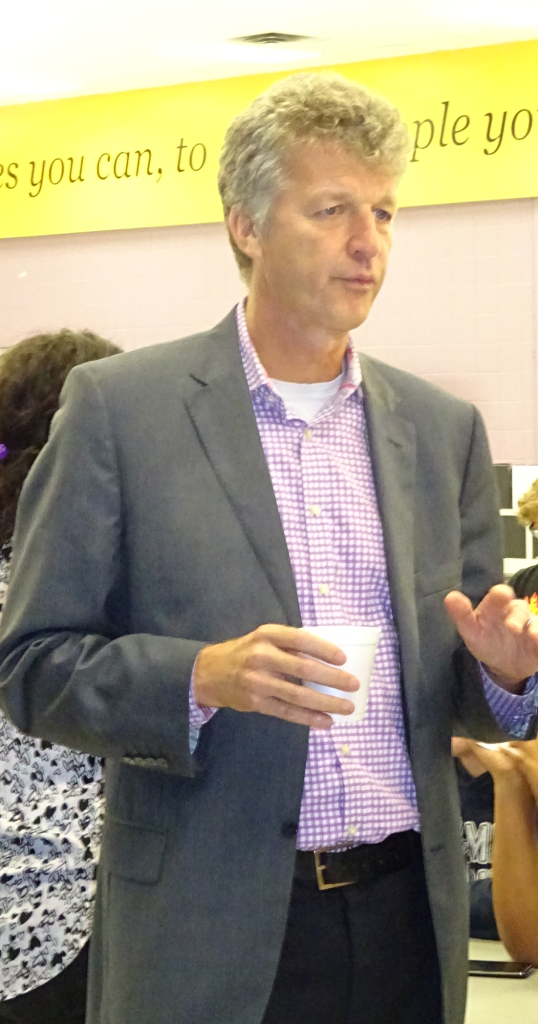 Stewart Miller – Director of Education Halton District School Board Add to those two problems the difficult this has with class sizes in some schools. Miller said several months ago that he found himself faced with situations where there were less than ten students in a regular class (a non-French immersion class) which from a teacher student ratio just wasn’t something he could afford to do.
Staff worked up a report and set out a series of motions that were published in the agenda for the boards June 1st meeting.
The Board created a Program Viability Committee (PVC) that has been in existence for just over a year to review both English and French program viability in HDSB elementary schools. Considerable stakeholder consultation was done and feedback was brought to the PVC for review, analysis and recommendations.
After careful analysis of the feedback provided, the PVC identified a number of options. The one they are recommending will provide an additional year for parents to understand their child as a learner prior to making a decision to enter French Immersion, it provides a relatively early entry point as preferred by stakeholders and provides for a greater intensity in the first two years of the program which supports French language acquisition. The recommended model also requires few if any additional boundary reviews, maintains our current dual and single track school configurations and as such will provide for a simpler and less disruptive implementation plan and transition to the new model.
The Gazette has not had an opportunity to study the report that trustees received on Friday. We are providing the outline that was published without any comment or analysis.
Be it resolved that effective in the 2014-15 school year, the Halton District School Board introduce 40 minutes/week of Primary Core French beginning in Grade 1 in 24 Halton District School Board schools, with a commitment for a full roll-out by 2017-18, with an annual review of the roll-out to be brought back to trustees each year, and;
(a) THAT schools selected for the initial phase of this program represent a variety of school organizations
(K-8, K-6, Dual Track, Single Track English, large and small enrolments) across the four geographic areas within the Halton District School Board, (Halton Hills, Milton, Oakville, Burlington).
(b) THAT students in these schools will receive the following minutes of Core French instruction between Grades 1- 8:
40 minutes / week Grades 1-3
120 minutes / week Grades 4
160 minutes/ week Grade 5
200 minutes / week Grades 6-7-8 (Appendix 5)
(c) THAT no later than June 2018, the Halton District School Board will assess the impact of this Primary Core French experience in relation to student engagement, student attitude, English proficiency and the impact on Grade 1 French Immersion uptake associated with these schools.
 (d) THAT under the leadership of the System Principal for French Second Language, School Programs and Human Resources, the Halton District School Board will develop a long-term recruitment and staff development plan to ensure the Halton District School Board hires and retains the highest quality French teachers available and that this plan is shared with the Board of Trustees. (d) THAT under the leadership of the System Principal for French Second Language, School Programs and Human Resources, the Halton District School Board will develop a long-term recruitment and staff development plan to ensure the Halton District School Board hires and retains the highest quality French teachers available and that this plan is shared with the Board of Trustees.
(e) THAT the Halton District School Board continues to provide staff development programs that include teaching strategies, modifications and accommodations to address students with diverse learning needs and students who arrive in Halton without prior experiences in either French Immersion and Core French.
(f) THAT the Halton District School Board develop and implement a 5-year plan whereby all Halton District School Board elementary schools with Intermediate Divisions have one classroom dedicated for the teaching of Grade 7-8 Core French whereas if it will not require additional portables.
Be it resolved that effective in the 2014-2015 school year, wherein a triple grade configuration has been possible (due to 23 or fewer students enrolled in three consecutive grades), the School Superintendent will assess the impact on the learning environment and opportunities for students and will consider and recommend for Board approval one of the following strategies;
staff as a Grade 1-2 blended class;
staff as a Grade 1-2-3 blended class;
redirect the Grade 1 students to a neighbouring school for their program and;
Wherein a triple grade configuration has been possible (due to 23 or fewer students enrolled in three consecutive grades for two consecutive years) the School Superintendent will consider and may recommend for Board approval a boundary review.
Be it resolved that effective in the 2014-2015 school year the Halton District School Board:
a) establish and communicate a consistent Grade 1 French Immersion February registration deadline for current Halton District School Board families, with a review of the effects of this procedure be undertaken by September 2014.
b) allow students who have not been in Senior Kindergarten within the Halton District School Board, register in Grade 1 French Immersion up to the first week of school.
c) communicate and implement the assessment and admission procedure for students with French proficiency arriving in Halton after the registration deadline.
d) All elementary schools that offer Grade 1 programming must host a Grade 1 Information Evening that includes information about English program, French Immersion program and Special Education placements. If the home school does not offer French Immersion, the school their students would be directed to for French Immersion cannot host their Grade 1 Information Evening at the same time. The Special Education presentation is to be scripted by the Board’s Special Education department, to include a description of all elementary Special Education placements.
Be it resolved that the Halton District School Board present the following options for the delivery of French Immersion to the public in the Fall of 2015 for the purpose of receiving feedback, considerations and comments. Feedback will be brought to the Board for consideration in the delivery of French Immersion programming:
1. Option 1: Grade 1 (early) French immersion remains a 50% French 50% English delivery model, but entry to FI would be capped. The method of capping would be determined at a later date.
2. Option 2: Grade 1 (early) French Immersion remains at 50% French and 50% English, however all FI programs would be delivered in single track FI schools. French Immersion would be phased out of dual track schools and no new dual track schools would be considered. The location of the single track schools would be determined at a later date.
3. Option 3: French Immersion would commence at a later entry point (mid entry); Grade 4. This would result in the delivery model of FI moving from a 50% model to at least a 80% French Immersion model. In addition the delivery of FI would occur in dual track schools only.
4. Option 4: French Immersion would commence at a later entry point (mid entry); Grade 4. This would result in the delivery model of FI moving from a 50% model to at least an 80% French Immersion model. In addition the delivery of FI would occur in single track FI schools only.
The Halton district school board has approximately 63,000 students in 86 elementary and 18 secondary schools. This enrolment projection results in an overall increase of 1.5% as compared to the 2015/2016 school year.
 Board chair Kelly Amos expressed some disappointment at the short amount of time trustees have been given to review the recommendations and discuss concerns with their constituents. The trustees had less than five days to review a complex document. What the board appears to be suggesting is that the roll out of French Immersion classes be cut back to create some time for parents to think about just what it is they want to do and then allow the board the time it needs to make it all happen.
It is messy – but there is some progress.
 Stewart and the trustees that direct him have their hands full. It may not be that quiet a summer on the education front. Stewart and the trustees that direct him have their hands full. It may not be that quiet a summer on the education front.
The Board will vote on this recommendation on June 15th. The board expects there to be a number of delegations – there will be a special delegation night on June 13.

 By Staff By Staff
May 14th, 2106
BURLINGTON, ON
Hayley Marie Remple plays the flute – at time she attackes the instrument and on other occasions you can almost feel her straining to find the air she needs to finish the bars of music she wants you to hear.
Remple was on the stage of the Performing Arts Centre doing a benefit concert for the art Gallery of Burlington. Don Graves, a noted Burlington landscape artist with a life of music as his frame and a noted book reviewer as well describes what the audience saw and felt this way:
 “A group of clever, inspired French composers: Debussy, Ravel, Saint-Saens, Faure, Widor and Satie. The time is 1870 to 1910. Add a gala young woman who mergers with her instrument, the flute, to weave an Evening in Paris, full of masterful playing, displaying that technique is something an artist should know but not show, a musician that spins history with multi-media storytelling and some of the finest flute playing I’ve heard in Burlington…ever. “A group of clever, inspired French composers: Debussy, Ravel, Saint-Saens, Faure, Widor and Satie. The time is 1870 to 1910. Add a gala young woman who mergers with her instrument, the flute, to weave an Evening in Paris, full of masterful playing, displaying that technique is something an artist should know but not show, a musician that spins history with multi-media storytelling and some of the finest flute playing I’ve heard in Burlington…ever.
“What brings this evening at the PBAC to a special moment in time is Haley Marie’s exquisite bringing together of music, history, coloratura playing and dynamic story telling.
Not a silo in sight. Music, painting, history, the era of impressionistic music in Paris and unveiled in an informal, warm and technically sparkling visual concert that earned her a well-deserved standing ovation.
 “Is this where the concert hall may be headed? Did the Art Gallery of Burlington and the Burlington Performance Art Centre launch something that speaks to the future of an evening listening to music, listening to a story and watching a screen that unfolds the place, the atmosphere and its time? Yes, it happened in Burlington and this young flutist raised our sights, our visions and our joy. “Is this where the concert hall may be headed? Did the Art Gallery of Burlington and the Burlington Performance Art Centre launch something that speaks to the future of an evening listening to music, listening to a story and watching a screen that unfolds the place, the atmosphere and its time? Yes, it happened in Burlington and this young flutist raised our sights, our visions and our joy.
One of the unfortunate aspects of single night performance is – we can’t say to you – “Ya gotta see this performance” – because she is gone – off to complete her five province tour.
Graves describes the performance well – he catches mixture of visual, verbal and the sounds from the flute well. He is a man with a good eye and a strong appreciation for music – he nailed this one.
He might have added that during the performance Remple has words pop up on the screen that explain the complexity of the music – nothing too deep – things like “I have to breath really hard for this part”
What the public saw and heard was a Carnegie Hall class artist who performs superbly and adds comments with words on the screen that add to the quality of the performance.
There are times when Remple comes close to attacking her flute – the finger work is superb.
She will do a Master Class for flute students Saturday afternoon.
Might she return – it was a performance worth recommending to friends.

 By Pepper Parr By Pepper Parr
May 10th, 2016
BURLINGTON, ON
Well – it is official – with more people than is usually required to get a car out of a ditch, the $500,000 parking meter system went into use officially on Monday.
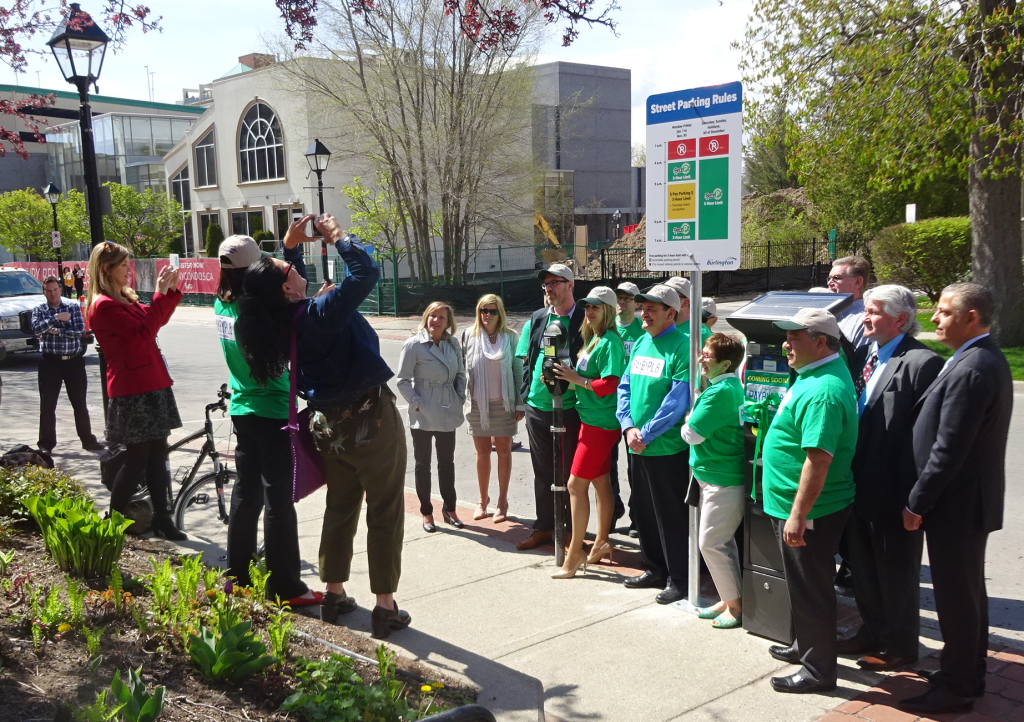 Looks like half of the Transportation department + a good portion of the city’s communications team was needed to launch the new parking meters. It took three different Requests for Proposals to get this project to the finish line. Luigi Lato , Chief Operating Officer, Precise ParkLink said he was honoured to attend the ribbon cutting ceremony, expressing that he is “overjoyed with the city’s excitement to introduce Precise ParkLink’s Pay-By-Plate parking technology. The residents will enjoy the upgraded parking system which brings Burlington on par with other global cities that use the Parkeon Pay-By-Plate parking meters and TelePark Pay-By-Cell option”.
So much for that!
The system is being paid for with funds that were in a reserve fund that is the levy the city places on commercial establishments in the downtown core. Ward 2 Councillor Marianne Meed Ward explained that the taxpayers were not the people paying for the system.
The difference for regular parking is – making sure you remember the license number of the car you are parking.
You can use cash or credit card. You will also be able to use your cell phone to pay for your parking. Referred to as TelePark, it is a service that you have to register for – something you do one line. W will explain this in more detail in a follow up article.
During the launch ceremonies IT staff did say there were some hiccup getting the back end of the system to work – it has to interact with the credit card organizations on a network that has the highest possible security.
 Expect to see people with PAYBYPL8 walking the downtown core looking for perplexed citizens wanting to pay for their parking. They are Parking Ambassadors – there to help! The city will go into a full court press media mode explaining how the system works and will have people on the street – they are being called “Parking Ambassadors” walking around the downtown core to answer questions.
 An additional feature is the ability of commercial operations to pay for the parking of their customers should they choose to do so. The take up on that opportunity doesn’t look all that promising at this point but as Mary Shepherd explained “these things take time for people to understand and then implement.” An additional feature is the ability of commercial operations to pay for the parking of their customers should they choose to do so. The take up on that opportunity doesn’t look all that promising at this point but as Mary Shepherd explained “these things take time for people to understand and then implement.”
 Ward 2 Councillor Marianne Meed Ward handling the cash part of the old parking meter with Downtown Business Association president Brian Dean. He is the one who is going to have to herd his members into taking on the feature that will let his members pay for client parking. Good luck Brian. The public hasn’t been jumping for joy. Michael Jones points out that these machines are in Hamilton and are not very user friendly – also if you have leftover time on your ticket you can’t share that with anyone. He adds: “ say goodbye to the great feeling of pulling up and seeing 20 minutes left on the previous parker’s meter …felt like winning a mini lottery”.
Some of the posts that held the old parking meters are being re-purposed and will become bicycle racks.

|
|

 Ray Rivers writes weekly on both federal and provincial politics, applying his more than 25 years as a federal bureaucrat to his thinking. Rivers was a candidate for provincial office in Burlington in 1995. He was the founder of the Burlington citizen committee on sustainability at a time when climate warming was a hotly debated subject. Tweet @rayzrivers
Ray Rivers writes weekly on both federal and provincial politics, applying his more than 25 years as a federal bureaucrat to his thinking. Rivers was a candidate for provincial office in Burlington in 1995. He was the founder of the Burlington citizen committee on sustainability at a time when climate warming was a hotly debated subject. Tweet @rayzrivers








































 That detailed information is followed by the boiler plate stuff put at the end of every media release the province sends out – sort of like Burlington’s fetish for the news that it is the number one mid-sized city in Canada
That detailed information is followed by the boiler plate stuff put at the end of every media release the province sends out – sort of like Burlington’s fetish for the news that it is the number one mid-sized city in Canada








 In their media release the board does say some functions may not be accessible to users. These functions may take 24-48 hours to deploy. “We appreciate the patience of parents/guardians, staff and community members as we work to get the website fully operational to provide an improved web experience.”
In their media release the board does say some functions may not be accessible to users. These functions may take 24-48 hours to deploy. “We appreciate the patience of parents/guardians, staff and community members as we work to get the website fully operational to provide an improved web experience.”







 “We need to support our small businesses as much as possible and that means giving them access to services 24 hours a day, seven days a week,” said Mayor Rick Goldring. “A step in the right direction is that businesses can now renew their licences online whenever they want.”
“We need to support our small businesses as much as possible and that means giving them access to services 24 hours a day, seven days a week,” said Mayor Rick Goldring. “A step in the right direction is that businesses can now renew their licences online whenever they want.”






 (d) THAT under the leadership of the System Principal for French Second Language, School Programs and Human Resources, the Halton District School Board will develop a long-term recruitment and staff development plan to ensure the Halton District School Board hires and retains the highest quality French teachers available and that this plan is shared with the Board of Trustees.
(d) THAT under the leadership of the System Principal for French Second Language, School Programs and Human Resources, the Halton District School Board will develop a long-term recruitment and staff development plan to ensure the Halton District School Board hires and retains the highest quality French teachers available and that this plan is shared with the Board of Trustees.
 “A group of clever, inspired French composers: Debussy, Ravel, Saint-Saens, Faure, Widor and Satie. The time is 1870 to 1910. Add a gala young woman who mergers with her instrument, the flute, to weave an Evening in Paris, full of masterful playing, displaying that technique is something an artist should know but not show, a musician that spins history with multi-media storytelling and some of the finest flute playing I’ve heard in Burlington…ever.
“A group of clever, inspired French composers: Debussy, Ravel, Saint-Saens, Faure, Widor and Satie. The time is 1870 to 1910. Add a gala young woman who mergers with her instrument, the flute, to weave an Evening in Paris, full of masterful playing, displaying that technique is something an artist should know but not show, a musician that spins history with multi-media storytelling and some of the finest flute playing I’ve heard in Burlington…ever. “Is this where the concert hall may be headed? Did the Art Gallery of Burlington and the Burlington Performance Art Centre launch something that speaks to the future of an evening listening to music, listening to a story and watching a screen that unfolds the place, the atmosphere and its time? Yes, it happened in Burlington and this young flutist raised our sights, our visions and our joy.
“Is this where the concert hall may be headed? Did the Art Gallery of Burlington and the Burlington Performance Art Centre launch something that speaks to the future of an evening listening to music, listening to a story and watching a screen that unfolds the place, the atmosphere and its time? Yes, it happened in Burlington and this young flutist raised our sights, our visions and our joy.




